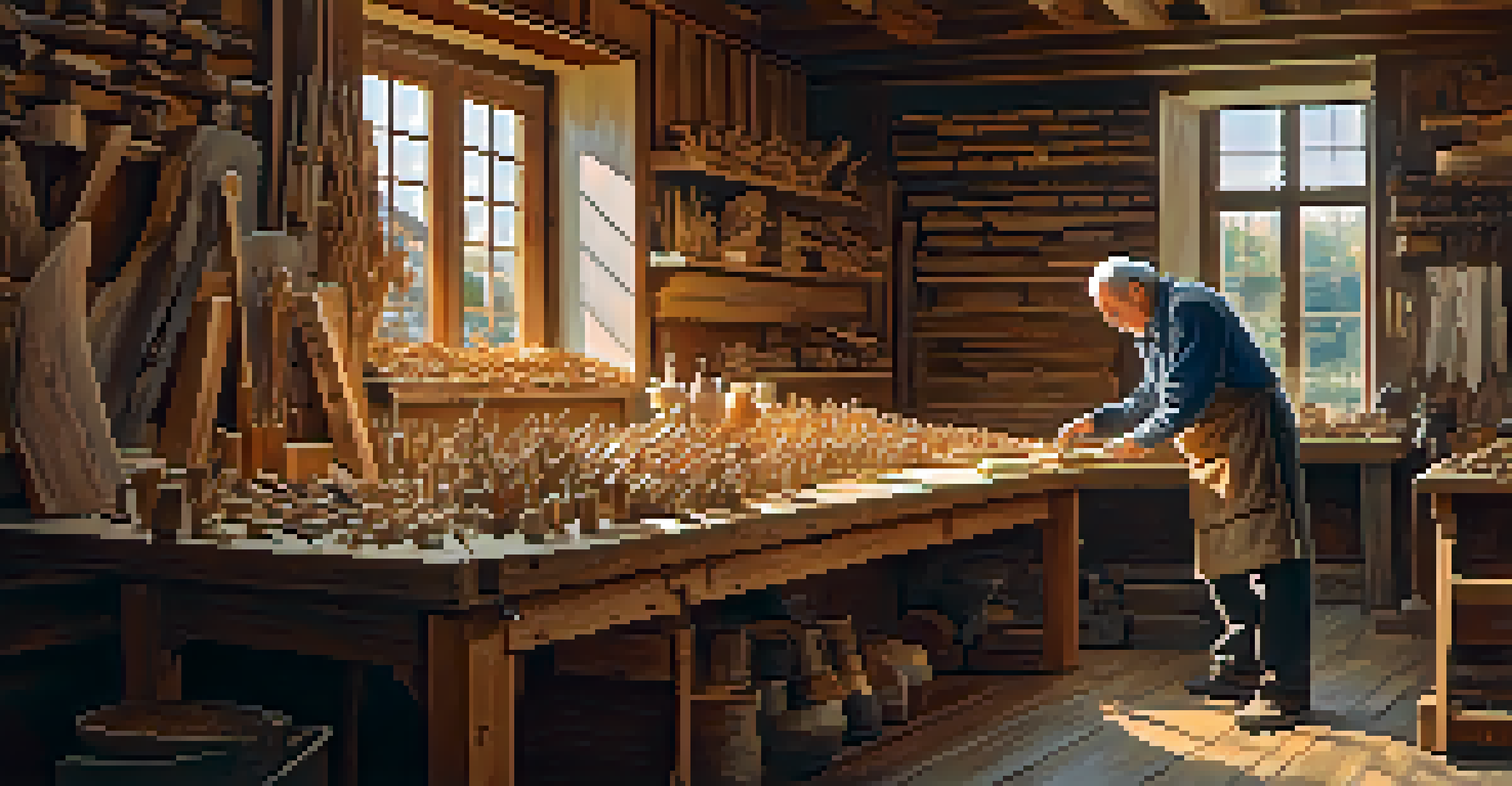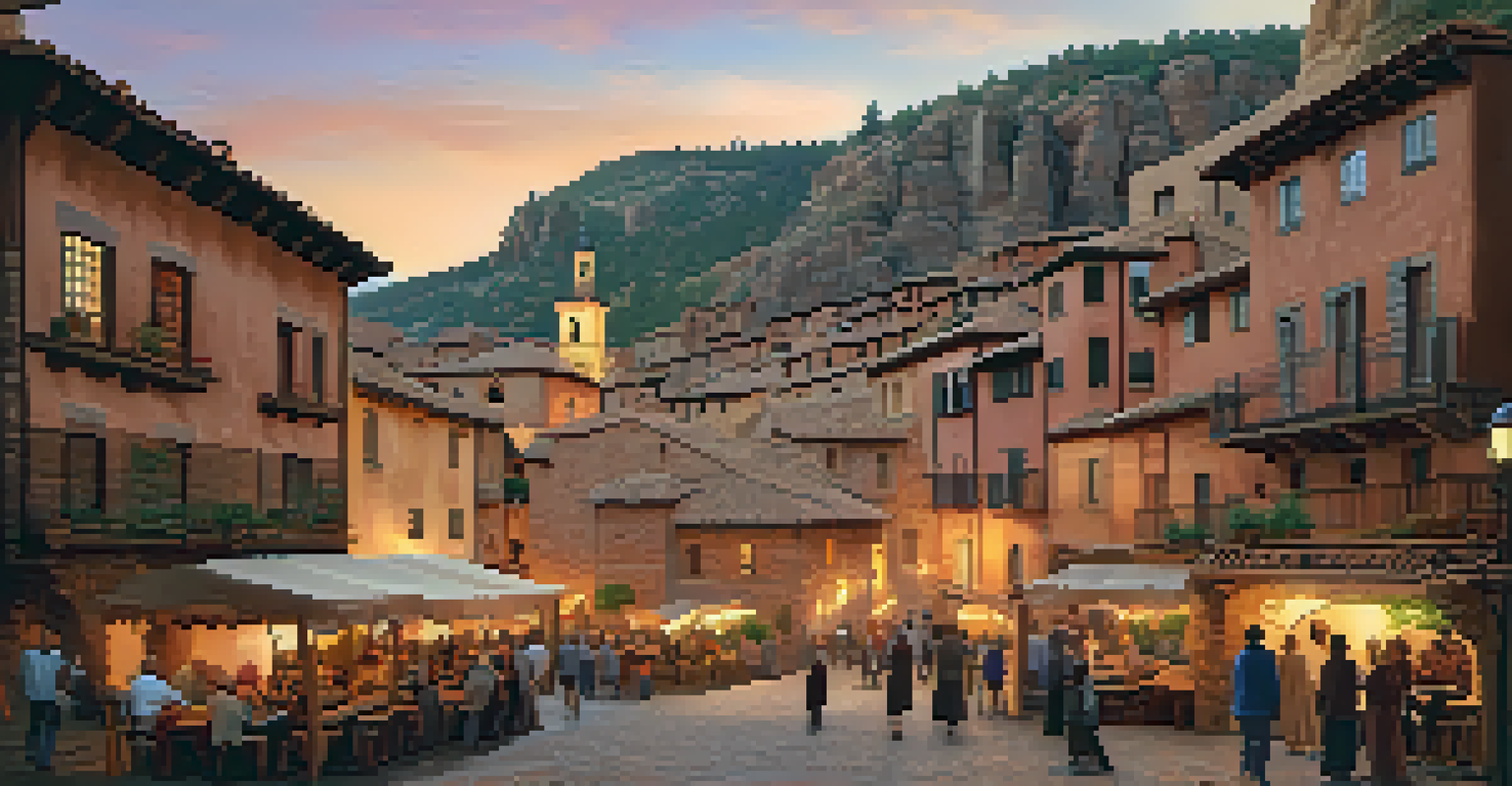Community Involvement in Spain's Cultural Heritage Preservation

Understanding Cultural Heritage in Spain
Cultural heritage encompasses the traditions, monuments, and artifacts that define a community's identity. In Spain, this includes everything from ancient Roman ruins to the vibrant flamenco dance. These elements not only tell stories of the past but also foster a sense of belonging among locals.
Cultural heritage is the foundation of our identity, providing a sense of belonging and continuity in a rapidly changing world.
The rich tapestry of Spain's cultural heritage is recognized globally, with numerous sites listed as UNESCO World Heritage Sites. This recognition highlights the importance of preserving these artifacts for future generations. But preserving culture isn't just about protecting buildings; it's also about maintaining the traditions and practices that breathe life into them.
As communities become more aware of their cultural significance, many are stepping up to play an active role in their preservation. This grassroots involvement is crucial, as local residents often have the most intimate knowledge of their heritage and the challenges it faces.
The Role of Local Communities in Preservation
Local communities are the heartbeat of cultural heritage preservation in Spain. They engage in activities such as organizing festivals, restoring historical sites, and educating younger generations about their cultural roots. This hands-on approach not only keeps traditions alive but also strengthens community bonds.

For example, in towns like Ronda, residents host annual celebrations that showcase traditional music and dance, ensuring that these art forms are passed down. Such events not only attract tourists but also instill pride in the locals, fostering a deeper connection to their cultural heritage.
Community Drives Cultural Preservation
Local communities play a vital role in preserving cultural heritage by actively engaging in restoration efforts and educational initiatives.
Moreover, community-led initiatives often attract funding and resources that might not be available otherwise. When locals advocate for their heritage, they can influence policy decisions and secure support from government and non-profit organizations.
Challenges Faced by Cultural Heritage Initiatives
Despite the enthusiasm for preserving cultural heritage, communities often face significant challenges. One major issue is the lack of funding, which can hinder restoration projects or educational programs. Many local initiatives rely on donations and volunteer work, making sustainability a constant concern.
Preservation means keeping our heritage alive, not just in museums but in the hearts and minds of our communities.
Additionally, the pressure of modernization can threaten traditional practices and sites. As cities expand and develop, historical landmarks may be overlooked or neglected in favor of new construction, leading to a loss of cultural identity.
Another challenge is engaging younger generations. With the allure of modern entertainment and technology, capturing the interest of youth in cultural heritage can be difficult. Communities must find innovative ways to make traditions relevant and exciting to younger audiences.
Successful Community-Led Preservation Projects
There are numerous success stories across Spain where local communities have effectively preserved their cultural heritage. One notable example is the restoration of the medieval town of Albarracín, where locals banded together to revitalize their historic architecture and promote tourism.
Another inspiring project is the revival of traditional crafts in regions like Galicia. Artisans are not only preserving age-old techniques but also passing them on to younger generations through workshops and apprenticeships. This hands-on experience fosters appreciation and respect for cultural heritage.
Challenges in Heritage Initiatives
Cultural heritage initiatives face significant challenges, including funding shortages and the impact of modernization on traditional practices.
These projects demonstrate that community involvement can lead to tangible results. When residents take ownership of their heritage, they create a legacy that honors the past while ensuring its relevance for the future.
The Impact of Tourism on Cultural Heritage
Tourism plays a double-edged sword in the context of cultural heritage preservation. On one hand, it provides essential funding and awareness for local initiatives. Tourists often flock to Spain to experience its rich culture, which can boost local economies and encourage community pride.
Conversely, the influx of visitors can also lead to the commercialization of cultural practices. This commodification can dilute the authenticity of traditions, turning them into mere spectacles for entertainment rather than meaningful expressions of identity.
Communities must navigate this delicate balance, ensuring that tourism benefits cultural preservation while protecting the integrity of their heritage. By promoting sustainable tourism practices, locals can create an environment where both culture and commerce thrive.
Educational Programs Promoting Heritage Awareness
Education is a powerful tool in fostering appreciation for cultural heritage. Many communities in Spain have developed educational programs that engage schools and local organizations, teaching about the significance of their traditions. This proactive approach ensures that heritage is not just a concept but a lived experience.
For instance, workshops on traditional cooking or handicrafts can ignite interest among young people. These hands-on activities make history tangible, allowing participants to connect with their culture in a personal way. Such programs also encourage dialogue between generations, bridging the gap between elders and youth.
Tourism's Double-Edged Impact
While tourism can provide essential funding for cultural preservation, it also risks commodifying traditions and diluting their authenticity.
Furthermore, partnerships with local universities and cultural institutions can enhance these educational efforts. By collaborating on research projects or heritage festivals, communities can amplify their voices and share their stories with a broader audience.
The Future of Community Involvement in Heritage Preservation
Looking ahead, the future of community involvement in cultural heritage preservation in Spain appears promising. With a growing awareness of the importance of heritage, more communities are likely to engage in preservation efforts. This trend is complemented by the rise of digital platforms that enable broader participation and collaboration.
Social media, for example, provides a space for communities to share their heritage stories, attract support, and promote events. By harnessing technology, locals can reach a global audience, raising awareness and appreciation for their unique cultural narratives.

Ultimately, the ongoing commitment of communities to preserve their heritage will be crucial in the years to come. As they navigate challenges and seize opportunities, these grassroots efforts will ensure that Spain's rich cultural tapestry remains vibrant and intact for future generations.